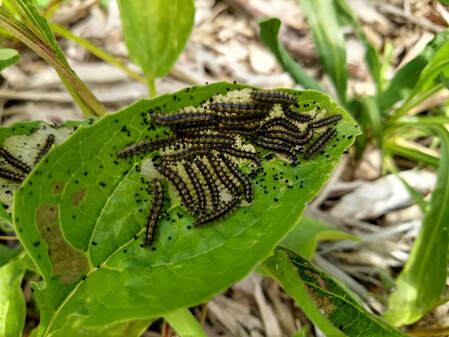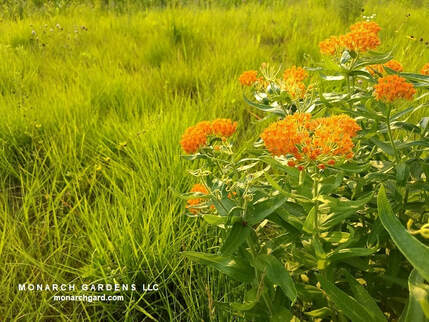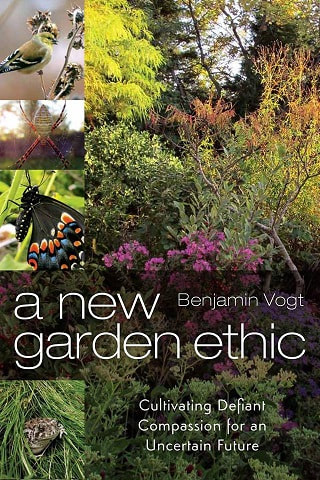What is a Straight Species Native Plant?
A plant that is found in the wild and has not been grown to produce specific ornamental traits. It's evolved naturally in the wild and reproduces via open pollinated seed (wind blown or insect produced pollination without the help of humans). That's the super simple definition, which is what we're going for throughout this piece.
What Is a Cultivar?
A native plant cultivar (or nativar) is a plant that differs from the straight species in some regard -- usually height, bloom color, bloom size, or leaf color. There are two main types of cultivars:
Selection -- A plant sport, showing any of the aforementioned differences, that's found in the wild or a garden then is humanly reproduced to maintain that different trait. So a plant hunter might find an aromatic aster in a prairie with a different bloom color or overall size than the more prominent straight species. The plant tag will read something like Asclepias tuberosa 'Holy Flower Batman.' Something like that. :)
Hybrid -- Purposely crossing two related plants, via human pollination, to produce a desired trait in a new plant. So think about orange coneflowers or pompom coneflowers. The plant tag will read something like Echinacea x 'Shiver Me Timbers.'
Overall, the first issue is one that's not just about native plants, but growing and selling all plants (native or not) in general.
Tissue Culture -- This is the process of reproducing plants for the mass market on a large scale; basically it's cloning. You take a physical piece of a live plant you wish to reproduce and get it to root and grow into a full-sized specimen. The problem here is that even if it's a native plant -- straight species, selection, or hybrid -- you're producing the same exact plant over and over thousands if not millions of times. One issue could be this: that if you reproduce a genetically identical plant native to the south, and then place it in the north, it may have a harder time thriving in the climate and / or have its bloom time out of sync with local pollinators. While many native plants have large ranges across the U.S., those ranges include many distinct genetic populations adapted with and evolved to the local climate and wildlife. Even a big bluestem in eastern Nebraska is different than one in western Iowa.
Pollinator Support -- When we alter bloom colors or shapes we're altering far more than what humans can see. We're also changing: UV runways that bees use to find flowers and access pollen; nectar (sugar) and pollen (protein) amounts and quality; and other ques insects use to find or assess the value of flowers, from electric charges to sounds. Until we fully study the thousands and tens of thousands of interactions occurring in even just a small locale between plants and insects, we can never know how cultivars compare to straight species. And if you ever see a cultivar that shows no pollen when the straight species does, know that we've effectively made the plant useless for bees even if we find the new form attractive.
Larval Host -- Different blooms are appealing to gardeners and designers (as well as the breeders and nurseries that sell them), but so are various leaf colors. But as you can imagine, similar issues arise when we alter leaf color as when we alter bloom color. For example, the straight species of ninebark and elderberry have green leaves, whereas several cultivars of both have purple or plum. What happens now is that the insects who evolved to use these native plants to lay eggs and rear their young (caterpillars are one example), can no longer recognize the leaves when they taste them to lay eggs. And even if those eggs hatch, the leaves are now toxic to the larvae who starve. Two issues here are that if you want more butterflies and moths, you'll need to have more larvae; and if you want more birds, you'll need more insect larvae, since over 90% of songbirds feed exclusively insects to their young while they are in the nest (and we're talking hundreds of insects a day, both larvae and adults as well as spiders and beetles).
Trusting nature seems like a more sound option than trusting ourselves when we still know so very little. A few early studies have shown that changing the height or mature size of a native plant have minimal impact on supporting pollinators, but changing flower color and shape have more significant drawbacks. But even still, if we're going to buy a cultivar that is only somewhat different than the straight species, it's more often than not been cloned, and that's going to diminish the genetic diversity of the species -- especially if those plants breed with nearby wild (straight species) populations.
What's the Best Option?
Just as with human food systems, local may be best. In a perfect world we'd all have local and regional plant producers who grow their plants from responsibly collected wild seed of local remnant populations. This is called local ecotype or local genotype. These plants come from open pollinated seed and may be better able to withstand local weather and climate extremes while providing more resources for local wildlife (think about bloom times being in sync with pollinators who may use only the pollen from that species to feed their young, as is the case with ologolectic bees... and don't even get started about climate change altering bloom times so flowers appear weeks before the insect species that use them do). Of course, it's hard -- but not impossible -- to find nurseries selling local ecotype seeds and plants, but more and more are popping up in every state; I can think of several in Nebraska and Kansas, for example.
That's the kicker. Plants and animals are trying to move uphill and north in order to keep pace with the ecosystems and weather they evolved with -- such is the case for bumble bees who evolved in a cooler climate. But they'll eventually run out of habitat. Do we use plant species from a state south of us? Do we assist in migration? Do we just try to use any plant material from any region that can survive in the new climatic uncertainty? The answers to the above will be varied depending on profession, beliefs, and practical experience.
Personally, I fall on this line of reasoning -- we need to give local plant and animal populations as much chance to evolve and adapt as possible for as long as we can (this might be only decades or centuries, even so it's not enough time for most species to evolve). This means using local native plants with immediate or nearby genetic origins, plants wildlife and insects can recognize. Further, it means gardening in a different way -- reducing high input lawn, not using fertilizer or chemical sprays, keeping as much water on site as possible, using more plants period, and using plants to reduce the amount of energy my home uses (think shade in summer and wind block in winter).
If you'd like to help discover the roles cultivars play for pollinators, consider becoming a citizen scientist. Project BudBurst has an ongoing nativars research project you can join in on.
And if you'd like to go deeper into cultivars, try the online class.





 RSS Feed
RSS Feed

